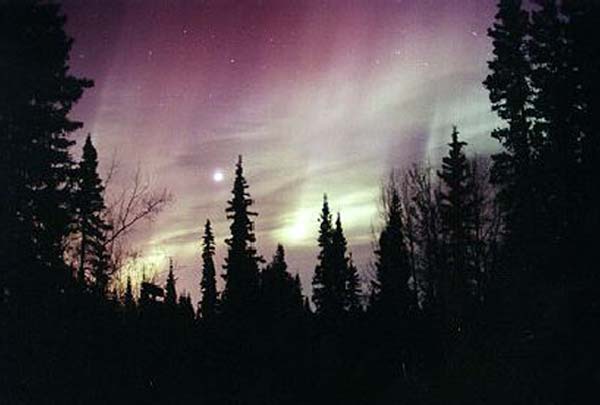Explanation: A night sky can glow in fascinating ways. Through a clearing in the woods, the pictured sky above Alaska shines by reflected light from a nearby city, by the brightness of the Moon, and by aurora. The night sky in or near a city appears to contain relatively few stars because lights there reflect off atmospheric particles, hiding stars in a diffuse glow. The bright Moon also creates a diffuse sky glow, although much less bright than the analogous blue-sky glow created during the day by the Sun. Particles from the Sun crashing into the Earth's atmosphere are seen here as bands of aurora. These glows also illuminate visible clouds. Auroral displays are becoming more frequent as the Sun approaches Solar Maximum.
1999 2000 2001 2002 2003 2004 2005 2006 2007 2008 2009 2010 2011 2012 2013 2014 2015 2016 2017 2018 2019 2020 2021 2022 2023 2024 2025 |
Yanvar' Fevral' Mart Aprel' Mai Iyun' Iyul' Avgust Sentyabr' Oktyabr' Noyabr' Dekabr' |
NASA Web Site Statements, Warnings, and Disclaimers
NASA Official: Jay Norris. Specific rights apply.
A service of: LHEA at NASA / GSFC
& Michigan Tech. U.
|
Publikacii s klyuchevymi slovami:
aurora - trees - sky - Moon - polyarnoe siyanie - Solnechnaya aktivnost' - Magnitnoe pole Zemli
Publikacii so slovami: aurora - trees - sky - Moon - polyarnoe siyanie - Solnechnaya aktivnost' - Magnitnoe pole Zemli | |
Sm. takzhe:
Vse publikacii na tu zhe temu >> | |
